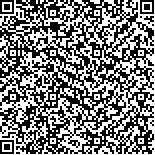| Quote
: |
刘鑫鑫, 田松云, 崔建博, 葛炎, 张国斌.薏苡仁汤对寒湿痹阻型胶原性关节炎大鼠Treg/Th17细胞失衡的调节作用[J].湖南中医药大学学报英文版,2025,45(3):395-401.[Click to copy
] |
|
| |
|
|
| This paper
:Browser 110times Download 48times |
| 薏苡仁汤对寒湿痹阻型胶原性关节炎大鼠Treg/Th17细胞失衡的调节作用 |
| 刘鑫鑫,田松云,崔建博,葛炎,张国斌 |
| (河南中医药大学, 河南 郑州 450046;许昌仁和骨伤医院, 河南 许昌 461000) |
| 摘要: |
| 目的 观察薏苡仁汤对寒湿痹阻型胶原性关节炎(CIA)大鼠的防治作用,探讨其对调节性T细胞(Treg)、辅助性T细胞17(Th17)的影响。方法 采用Ⅱ型胶原注射联合气候箱模拟寒湿环境的方法进行造模,大鼠随机分为空白组、模型组、阳性组(来氟米特10 mg/kg)及薏苡仁汤低、高剂量组(生药量分别为12、24 g/kg),每组8只。每日观察大鼠的整体情况,每周测量右后足的关节肿胀度。给药4周后,光学显微镜下观察踝关节切片的组织病理学;ELISA法检测疾病活动度指标类风湿因子(RF)、抗环瓜氨酸肽抗体(ACPA)、C反应蛋白(CRP)、血清转化生长因子-β(TGF-β)及白细胞介素-17A(IL-17A)水平;流式细胞术检测外周血中CD4+ CD25+ Foxp3+ Treg细胞、CD4+ IL-17+ Th17细胞所占CD4+ T细胞的比例。结果 模型组大鼠整体情况符合寒湿痹阻型CIA的典型症状,关节可见强直、畸形、活动功能受限等现象;薏苡仁汤低、高剂量组大鼠整体情况和关节症状有所改善,关节肿胀度在给药3、4周时较模型组降低(P<0.01)。给药4周后,与模型组比较,薏苡仁汤低、高剂量组踝关节在炎性细胞浸润、滑膜/纤维组织增生、骨和软骨结构破坏等方面均有不同程度的改善,血清RF、ACPA、CRP水平均降低(P<0.05,P<0.01),外周血Treg细胞比例及其标志性细胞因子TGF-β水平升高(P<0.01),Th17细胞比例及其标志性细胞因子IL-17A水平降低(P<0.01)。薏苡仁汤高剂量组血清TGF-β水平较薏苡仁汤低剂量组增高(P<0.05),其他指标两组间差异均无统计学意义(P>0.05)。结论 薏苡仁汤可改善寒湿痹阻型CIA大鼠的整体情况及关节症状,其作用机制可能与调节Treg/Th17细胞间的免疫失衡状态、减轻关节组织和全身的炎性反应、缓解关节软骨和骨的破坏等有关。 |
| 关键词: 胶原性关节炎 寒湿痹阻证 薏苡仁汤 调节性T细胞 辅助性T细胞17转化生长因子-β 白细胞介素-17A |
| DOI:10.3969/j.issn.1674-070X.2025.03.001 |
| Received:August 16, 2024 |
| 基金项目:河南省高校科技创新人才支持计划项目(15HASTIT041)。 |
|
| Regulatory effects of Yiyiren Decoction on Treg/Th17 cell imbalance in rats with collagen-induced arthritis of cold-dampness obstruction pattern |
| LIU Xinxin, TIAN Songyun, CUI Jianbo, GE Yan, ZHANG Guobin |
| (Henan University of Chinese Medicine, Zhengzhou, Henan 450046, China;Xuchang Renhe Orthopedic Hospital, Xuchang, Henan 461000, China) |
| Abstract: |
| Objective To observe the preventive and therapeutic effects of Yiyiren Decoction (YYRD) on collagen-induced arthritis (CIA) rats with cold-dampness obstruction pattern, and to investigate its impact on regulatory T cells (Treg) and T helper cell 17 (Th17) cells. Methods A rat model was established by injecting type Ⅱ collagen combined with exposure to a climate chamber simulating a cold-dampness environment. Rats were randomly divided into blank group, model group, positive control group (leflunomide 10 mg/kg), and low- and high-dose YYRD groups (12 g/kg and 24 g/kg raw medicines, respectively), with eight rats in each group. The overall situation signs of the rats were observed daily, and the joint swelling in the right hind paw was measured weekly. After four weeks of administration, the histopathological changes in ankle joint sections were observed under an optical microscope. ELISA was used to determine the levels of rheumatoid factor (RF), anti-cyclic citrullinated peptide antibody (ACPA), C-reactive protein (CRP), serum transforming growth factor-β (TGF-β), and interleukin-17A (IL-17A), which are indicators of disease activity. Flow cytometry was used to check the proportions of CD4+ CD25+ Foxp3+ Treg cells and CD4+ IL-17+ Th17 cells among CD4+ T cells in peripheral blood. Results The overall situation signs of the rats in the model group were consistent with CIA of cold-dampness obstruction pattern, with visible joint stiffness, deformity, and limited mobility. The overall situation and joint symptoms of the rats in the low- and high- dose YYRD groups were alleviated, and the degree of joint swelling was lower than that in the model group at three and four weeks after administration (P<0.01). After four weeks of administration, compared with the model group, both the low- and high-dose YYRD groups showed varying degrees of reduction in ankle joint inflammatory cell infiltration, synovial/fibrous tissue hyperplasia, and bone and cartilage structure damage. The serum levels of RF, ACPA, and CRP were all reduced (P<0.05, P<0.01), the proportion of Treg cells in peripheral blood and the level of their signature cytokine TGF-β increased (P<0.01), and the proportion of Th17 cells and the level of their signature cytokine IL-17A decreased (P<0.01). The serum level of TGF-β in the high-dose YYRD group was higher than that in the low-dose YYRD group (P<0.05), with no statistically significant differences in other indicators between the two groups (P>0.05). Conclusion YYRD can relieve the overall situation signs and joint symptoms of rats with CIA of cold-dampness obstruction pattern. Its mechanism of action may be related to regulating the immune imbalance between Treg/Th17 cells, reducing inflammatory reactions in joint tissue and the whole body, and alleviating bone and cartilage damage. |
| Key words: collagen-induced arthritis cold-dampness obstruction pattern Yiyiren Decoction regulatory T cells T helper cell 17 transforming growth factor-β interleukin-17A |
|

二维码(扫一下试试看!) |
|
|
|
|


